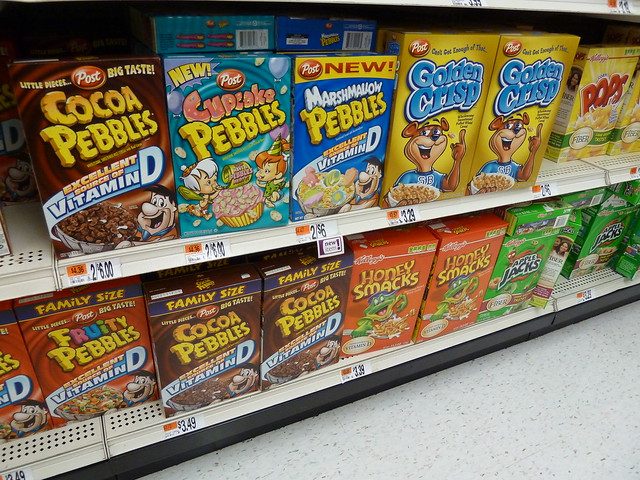
What Is Environmental Print?
The phrase Environmental Print refers to the print that children stumble upon and bump into in the course of their day. It refers to the signs, labels, logos, and other print kids interact with in their community.
Things like the sign outside the pizza place the family frequents, the letters and images on their favorite brand of breakfast cereal, the colorful wrapper of their favorite candy, and the tens of thousands of words and logos that reach out to them every time they enter a grocery store.
Environmental print holds great meaning to children and plays a hand in some of their first experiences with reading. Children us contextual clues and find meaning in environmental print they encounter. For example, a two-year-old, spying a red sign with golden arches, may shout, “Can I have fries? Pleeease?”

According to The Role Of Environmental Print In Emergent Literacy, “It is shown that interactions with environmental print in the child’s sociocultural context can develop their logographic reading skills. These skills, in turn, promote the development of emergent literacy skills that are the precursors to conventional reading skills. Environmental print may also be used more directly when parents and childhood educators use it to scaffold the learning of emergent literacy skills.”
While children’s interactions with print in their environments can be learning-rich experiences when out and about in the world, we here at Playvolution HQ think well-intentioned adults often go too far when attempting to use print in the classroom. For example, a toddler room where every item is labeled with its name, the walls are filled with print, and matching games with laminated bits of print abound can be overwhelming.
Such a space overloads the senses and screams, “READING IS ALL THAT MATTERS HERE! HURRY UP AND READ ALREADY!” It becomes a space where kids don’t bump into print, they have it forced upon them. Rule of thumb: If you lose sleep trying to figure out how to keep the laminated HAMSTER label on Mr. Sweet Cheeks, the class hamster, you might be going a bit too far with the labeling.
Here’s a post with examples of too much environmental print:
Contribute content to Playvolution HQ
Brought to you by Explorations Early Learning
Thoughts On This Entry?
I’d love to hear your thoughts on improving this entry and suggestions for additional glossary additions in the comments below. You can also contact me with comments or concerns.
Browse Trainings
Post Author
Jeff Johnson is an early learning trainer, podcaster, and author who founded Explorations Early Learning, Playvolution HQ, and Play Haven.


Leave a Reply